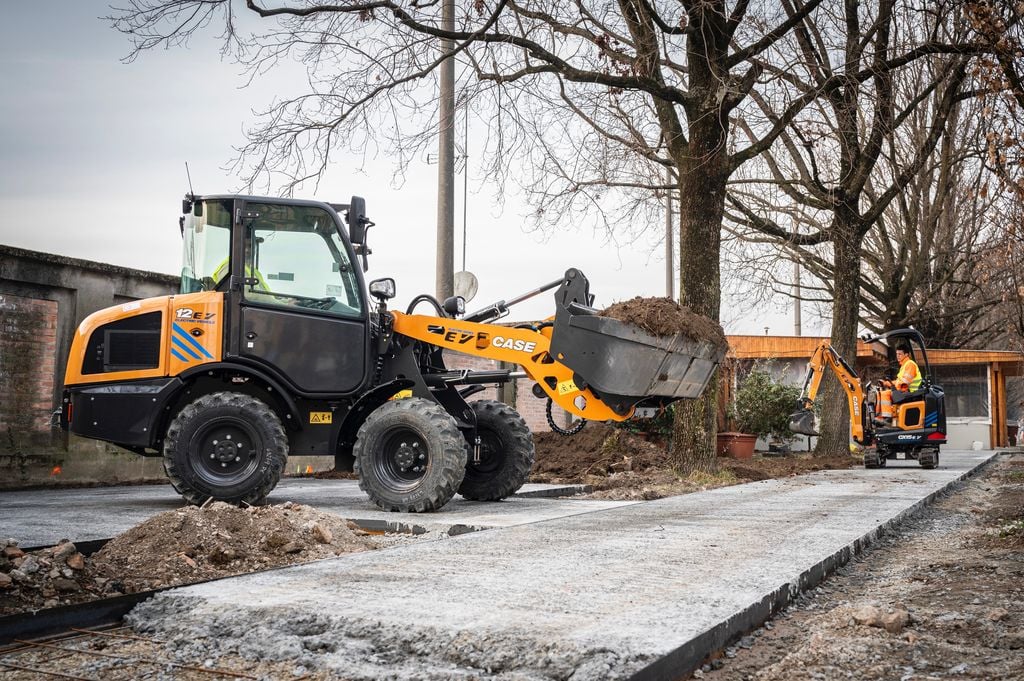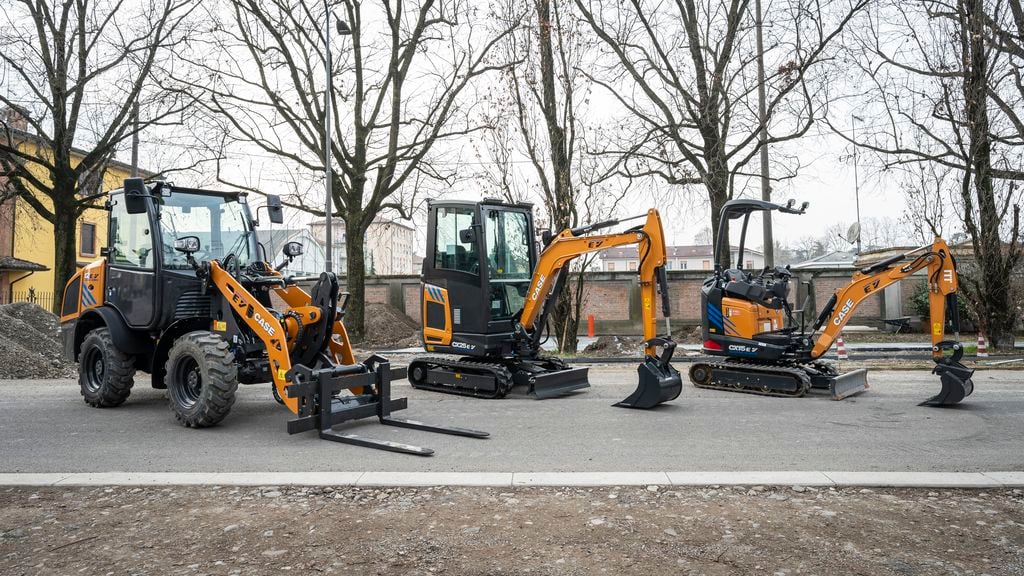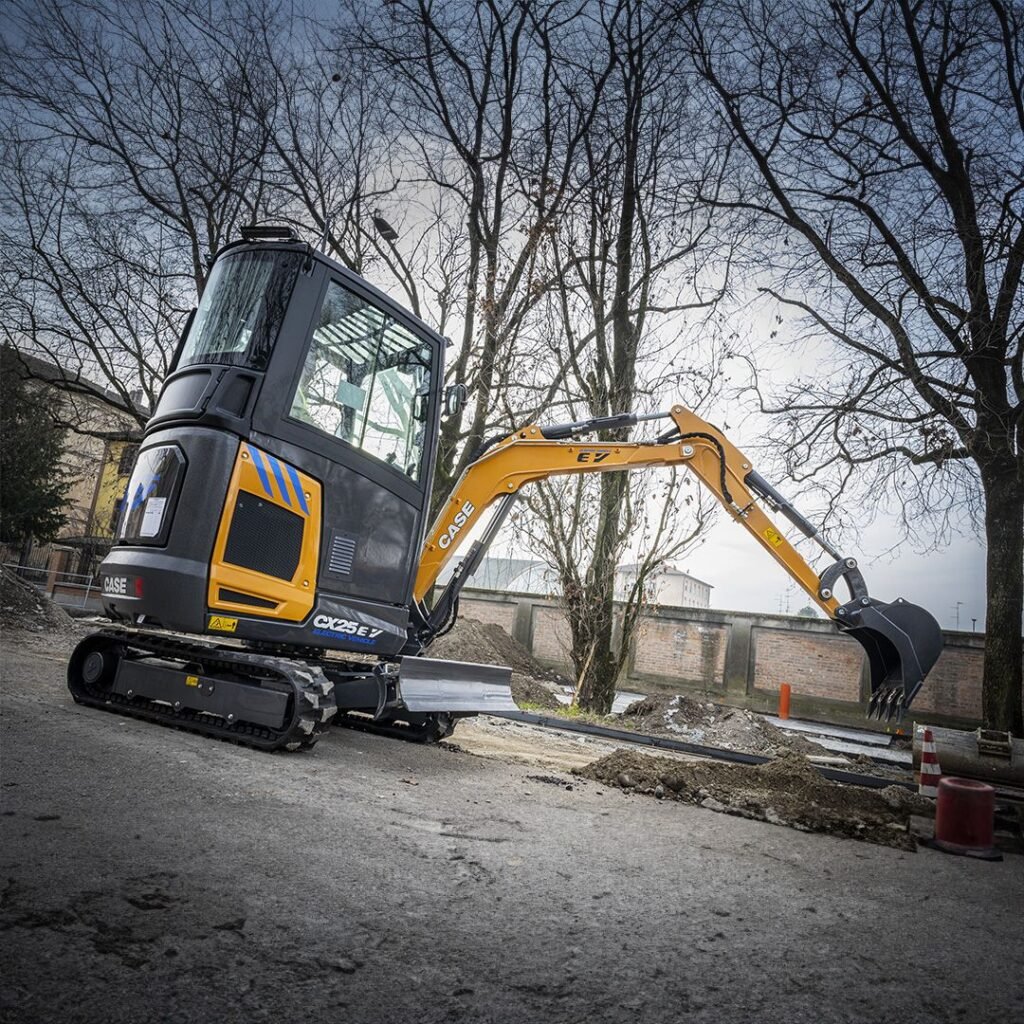Case CE has introduced the 12EV electric compact wheel loader, demonstrating its commitment to sustainable applications and alternative fuel solutions. Offering the same or improved performance in comparison with a diesel model of the same size, the 3.8-tonne loader has a 23kWh cobalt-free lithium-ion battery pack and a payload with pallet forks of 1.15 tonnes. With separate electric motors to power the driveline and the implement pump, the loader offers a faster response to the controls.
Applications and Benefits
The electric compact wheel loader can operate in restricted areas, in residential construction, tunneling and in sensitive environments, such as agriculture and horticulture, urban construction and areas that require quiet operation, such as residential building, hospitals and during night-time work.
Daily maintenance costs are reduced, as there is no engine or fluids to check, while the batteries are maintenance-free and vibrations are lower than on diesel models.
Technical features
The 23kWh battery provides the 12EV with three to six hours of operating autonomy, depending on the application. It comes with a standard 230V charger, that can replenish the battery overnight, or an optional 400V fast charger that takes just one hour to take the battery from 20-80%. A lunchtime recharge would allow all-day use of the EV12 in many situations.
The machine uses two electric motors to provide motive force. A 17kW motor delivers drive to the axles, while a 22kW motor powers the hydraulic system for the loader arms and bucket cylinder. There are three drive modes – Energy Saving, Standard and Power – that allow the operator to match the machine to the task at hand, to prolong battery life. A fourth operating mode is fully customizable by the operator, allowing them to select the desired response and tailor the energy consumption to the actual job site.

Electric mini excavators
The 12EV is Case CE’s third production battery electric model, following the introduction of the CX15EV and the CX25EV mini excavators. Weighing 1.5 and 2.5 tonnes respectively, these two compact excavators are powered by 21.5kWh and 32.3kWh battery packs, delivering full shift autonomous running.
The CX15EV uses an 11kW motor, while the larger machine has a 25kW rated output. These motors drive a low-noise helical gear pump and a load-sensing hydraulic system in the smaller model, while the heavier mini excavator uses a single load-sensing variable displacement pump. There is a three-mode control system, offering Eco, Standard and Power settings.
With an external three-phase 380V rapid charger, it is possible to recharge in around 1.5 hours. Using a conventional 230V domestic supply, it is possible to recharge in around 9 hours. In all other respects, the CX15EV and the CX25EV are the same to operate as the latest D-Series Case mini excavators.
With improved performance versus a conventional diesel machine, along with the benefits of zero-emission operation, Case electric loaders and mini excavators offer a vision of the future of compact construction machinery, helping customers to meet their corporate responsibilities now and for the coming years.

Tailored options for after-sales support
Case electric machines are equipped with 2 years SiteWatchTM subscription which allows customer fleet management and performance tracking, and CASE SiteConnect for machine health monitoring by CASE Dealers.
Maintenance of electric machines comes at a significantly improved cost, saving up to 40% compared to an equivalent machine with a combustion engine. CASE also offers connected and non-connected services such as CASE Care – a planned maintenance programme that allows for certainty on the total cost of maintenance without any hidden surprises.
In addition, there are a range of further services such as CASE Protect extended warranty and CASE Fluid Analysis to protect your machine and ensure uptime.
All CASE electric machines come with a three-year standard warranty on batteries and main electrical components.

Source: Case CE
Read the full article here










